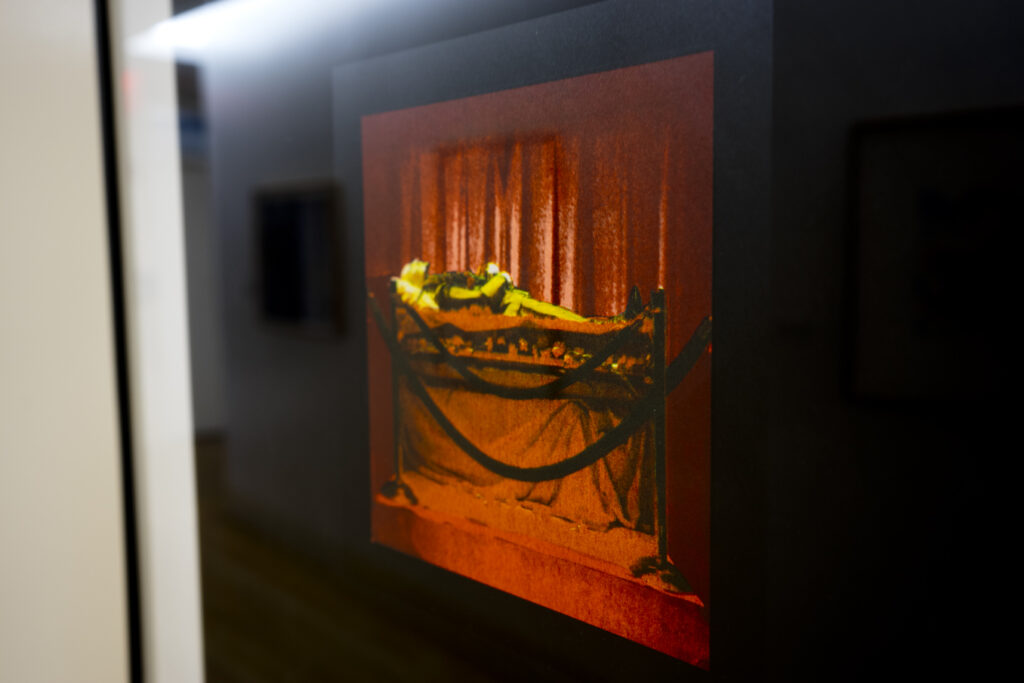
Vitaly Komar and Alex Melamid, Lenin at the Palladium, May Day, 1992.
This is the tomb of Lenin’s tomb. Lenin’s cadaver is lying on a red velvet bed, the essence of capitalist gilt, of the post-communist hyperreal. The Palladium was a club on 14th Street, now an NYU dorm. The very place where neoliberalism triumph over Communism was ironically celebrated by this duo of dissident artists is now itself plowed under by neoliberalism. The hyperreal (hyped real) is itself vulnerable.
Baudrillard appeared, presumably to give a talk, at the Palladium in the 1980s. I did not have a ticket (I didn’t even try; I didn’t think I was cool enough to get in). My friend asked me if I got in, what would I say to him. I said I would ask him in my halting French Monsieur Baudrillard, où se trouve la sortie la plus proche. (Where is the nearest exit?) In 1992, there was no exit for Lenin. Lenin cannot escape from his gilded, displaced tomb, any more than the Soviet authorities who got their warrant from Lenin thought their persecuted victims could escape from them. The red in Komar and Melamid’s picture is gaudy, lurid. But it is still red, a different shade but the same color as Communist zeal. We look at this picture from over twenty years ago and ask: Is there an exit from neoliberalism? For us?
What is disturbing to me about the display is mainly that it is a piece rife with situational and contextual irony, and the viewer might well be innocent of that. How many incoming students know this history? Our current students were most likely born after May 1, 1992. This is the world they grew up in, one of competing ironies. Are they aware of this?
Is the spirit of subversion these dissident artists meant to encourage being co-opted by its display in an institutional space?
The picture is with a collection other late Soviet dissident art in an obscure corridor in a building far away from the main academic spaces of the New School? Why put this art here? Are Komar and Melamid being put, as it were, in Siberia?
Marx, Lenin’s great inspiration, said events first occurred as tragedy, then came back as farce. Which term, tragedy or farce, more readily applies to this picture?
Nicholas Birns
Faculty, Eugene Lang College The New School for Liberal Arts

